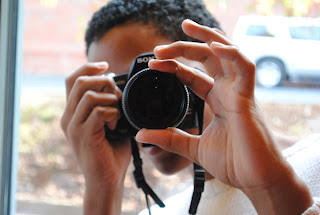Some of the many include:
- Complaining, belief in government conspiracies
- Certain bumper stickers
- Pretty much all bodily movement
- Leaving items behind or requesting privacy at a hotel
- Just about everything else
 Ironically, in one case a legitimate report of suspicious activity revealed that the New York Police Department was conducting an illegal surveillance operation outside of their jurisdiction.
Ironically, in one case a legitimate report of suspicious activity revealed that the New York Police Department was conducting an illegal surveillance operation outside of their jurisdiction.When I was tipped off to this latest Roll Call Release by Joe Cadillac, I assumed it was old since as early as 2006 photography was listed as a suspicious activity in a wide variety of contexts.
Furthermore, in 2010 “camera usage at non-tourist sites” and purchasing “camera/surveillance equipment” have been listed as indicators of potential terrorist activity.
Over 25 fliers have been produced by the FBI and Department of Justice alone for specific industries, all of which can be seen here.
However, this is indeed a new release for police, fire EMS and security personnel dated Nov. 13, 2012. It has the seals of the DHS and FBI emblazoned on the top, and was apparently produced in collaboration with the Interagency Threat Assessment and Coordination Group (ITACG), part of the infamous National Counterterrorism Center (NCTC).
“Terrorists and criminals may use photos or videos of potential targets to gain insight into security operations and details of facility operations, including traffic flow through and around facilities, opening times, and access requirements,” states the document, released by Public Intelligence (one of the most useful alternative news sources).
“Photographs and video useful in planning an attack may include facility security devices (surveillance cameras, security locks, metal detectors, jersey walls and planters); security personnel; facility entrances and exits; and other features such as lighting, access routes, gates, roads, walkways, and bridges,” the document adds.
While some of that photography would indeed be quite suspicious, the individuals who compiled the document apparently were only capable of compiling incidents which in fact had nothing to do with terrorist activity whatsoever.
“Although none were ultimately linked to terrorist activity, they are cited as examples for awareness and training purposes,” the document states.
This makes one wonder why on earth they are listing incidents that were in no way linked to terrorist activity as examples of suspicious activity potentially linked to terrorism?
One might point out that this likely will just continue to encourage the production of worthless intelligence by fusion centers and other entities supposedly aimed at fighting terrorism.
By far the most absurd of the indicators of potentially suspicious photography includes, “Individuals encountered with photographs of critical infrastructure, iconic buildings, or other sites not of tourist interest.”
The obvious issue here is, “iconic buildings, or other sites not of tourist interest.” Wouldn’t iconic buildings be, by definition, of tourist interest or at least of interest to someone? If not, why would they be iconic?
The most laughable aspect of the document is the clear attempt to preemptively shield the agencies from the obvious criticism, namely, that these recommendations would clearly endanger legitimate activities protected by the First Amendment.
“First Amendment-protected activities should not be reported in a SAR [Suspicious Activity Reporting] or ISE-SAR [Information Sharing Environment-Suspicious Activity Reporting] absent articulable facts and circumstances that support the source agency’s suspicion that the behavior observed is not innocent, but rather reasonably indicative of criminal activity associated with terrorism, including evidence of pre-operational planning related to terrorism,” states the document.
When the document gives examples which are admittedly completely irrelevant and in no way linked to terrorist activity, how can they honestly believe that recipients of the document would be prepared to present “absent articulable facts and circumstances that support the source agency’s suspicion that the behavior observed is not innocent, but rather reasonably indicative of criminal activity associated with terrorism”?
No comments:
Post a Comment